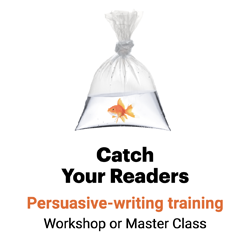Use a structure that’s been proven in the lab to increase reading
What if I told you there was a free tool available that would help you convince readers to read your messages more often, read them more completely and spend more time reading them? Would you use it?

And what if I told you there was another tool out there that reduced readership and made people stop reading sooner? Would you stop using it? How quickly would you get rid of it?
My friend, these tools exist. The first — the one that encourages reading — is the feature-style story structure. The second one, the one that reduces reading, is the inverted pyramid.
And if you don’t know, now you know.
Feature structure increases reading.
Feature-style stories are easier to read than the traditional inverted-pyramid news structure, according to “Impact,” a 2001 study led by the Readership Institute at Northwestern University and sponsored by the Newspaper Association of America and the American Society of Newspaper Editors.
Making messages more “easy to read” is one of the best ways to increase readership, the study found. That is, according to the study, the higher the score on “easy to read,” the more likely people are to:
- Read the paper more often
- Read it more completely
- Spend more time reading it
“Easy to read” includes “is relaxing to read” and “makes it easy to find what I’m looking for.”
Inverted pyramids reduce reading.
Inverted pyramids, on the other hand, scored lowest in readership of four structures studied.
That’s according to “Ways With Words,” a 1993 project of the American Society of Newspaper Editors, The Poynter Institute, the St. Petersburg Times and the University of Wisconsin-Madison.
The inverted pyramid also tanked in getting the reader across the jump, which means it made people stop reading sooner.
Why? The pyramid starts out boring and “gets more boring as the reader reads down,” “Ways With Words” researchers said. Who needs to stick around for that?
AP uses features to ‘draw in the reader.’
One solution: Write more feature-style stories.
You won’t be alone. The Associated Press is now including a feature lead in addition to a news lead with every story it sends across the wire, according to The New York Times.
Why? The feature leads are more likely to “draw in the reader through imagery, narrative devices, perspective or other creative means,” according to the nation’s dominant news service.
Why not join the AP? After all, who would keep using a tool that doesn’t work when there’s a free tool out there that does?

Leave a Reply